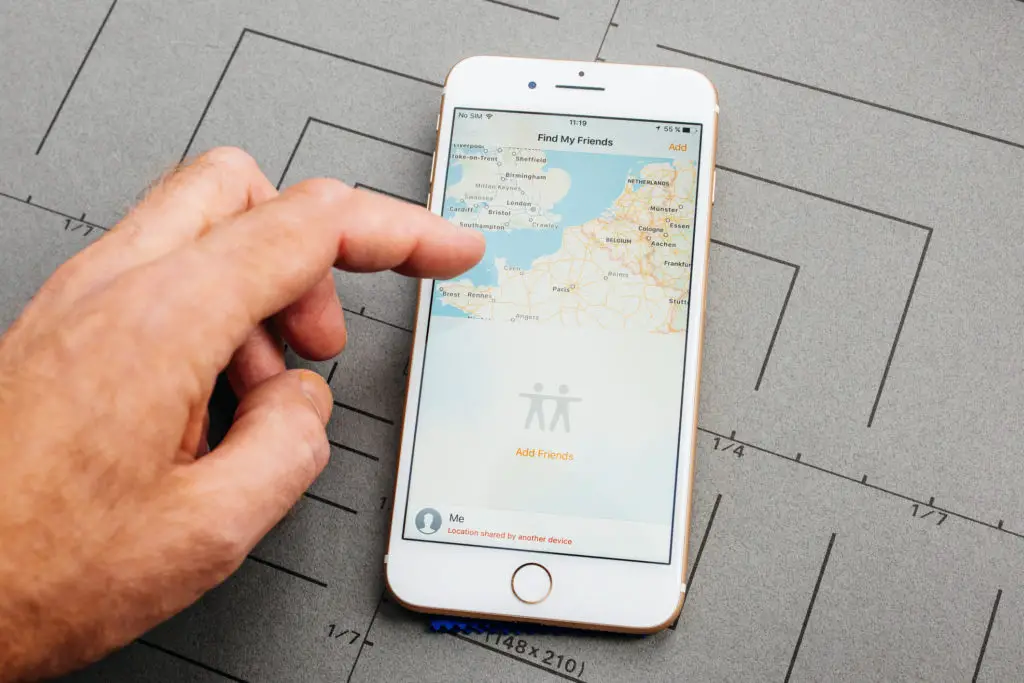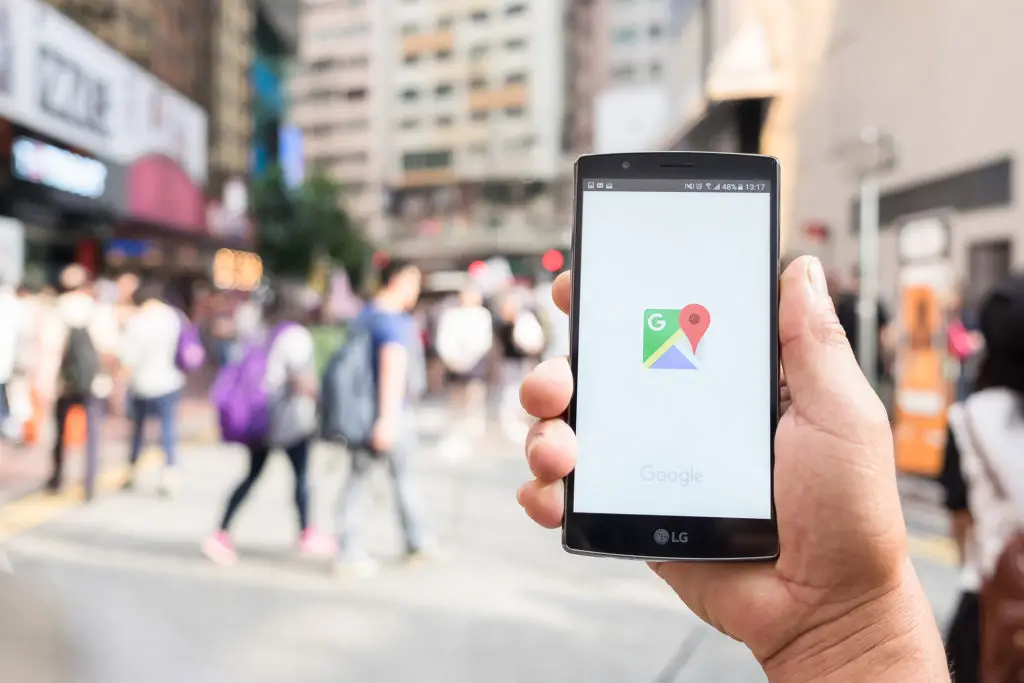Today's smartphones can calculate GPS coordinates and share that location through the Internet. When traveling, you can turn on tracking as a safety step, but I recently wondered how accurate are location-sharing applications like Find My Friends and Google Location Sharing?
Smartphone Assisted GPS combines cellular towers and satellite signals to find positioning. When cellular and/or GPS signals are weak, location can be as inaccurate as 65 feet or 20 meters. Find My Friends and location sharing on Google Maps is accurate to 16 feet or 5 meters under ideal conditions.
To understand the accuracy of these apps, let's look at how they work.

How Accurate Is Find My Friends?
Location services have become incredibly accurate with so many GPS-enabled phones, GPS trackers, and mapping software. However, under certain circumstances, GPS services can be inaccurate.
First, let's understand the basic operation of how location apps work.
- Launching your Find My Friends app sends a request from your device through Apple's servers to a friend's iPhone.
- The target device activates location services, calculates (or triangulates) its position, and sends the data back to Apple.
- Apple relays the coordinates to your device.
- Your Find My Friends app overlays the location onto a map for reference.
In addition to the estimated location, a "confidence" level is included. A lower accuracy can mean the difference between an estimated 15 to 300 feet or 5 to 100 meters. Position accuracy depends mainly on the information gathered by the target iPhone of the person you're tracking.
If the target iPhone is outside with a clear view of the sky and no obstructions like buildings, trees, or things that interfere with radio signals, an iOS device (or any GPS-enabled smartphone) should be accurate to about 5 meters.
If your friend's iPhone is inside a dwelling with interference from the structure, wiring, and other sources of radio signal interference, the GPS location will be less accurate.
Modern mapping and location software can stitch together various inputs from not only Assisted GPS (A-GPS) and cell tower signals but also Wi-Fi and even Bluetooth when indoors to provide a more accurate location. While these composite (or hybrid) location solutions aren't as precise as pure satellite-assisted ones, they are often sufficient for most applications.
Do iPhones Do A Better Job Than A Standard Car Or Handheld GPS?
There is little accuracy difference between an iPhone or Android smartphone and a consumer-grade dedicated GPS device. Modern smartphones have Assisted GPS that uses satellite signals and ground-based cellular tower triangulation, making them as accurate as a handheld or in-car GPS.
Both have types of location devices have their specific use cases.
An iPhone is an excellent general-purpose tool for navigating and location sharing in daily life. Apple generally does a decent job at keeping location information private or shared (if the user wants) between trusted users. There's a high level of scrutiny of apps using iOS location.
On the other hand, a dedicated GPS is preferable when you have a specific purpose.
For example, marine GPS devices provide a downloadable over-water map and depend heavily on techniques like real-time kinematic (RTK) positioning to correct common math errors when relying on satellite navigation (GNSS) systems.
Similarly, in the wilderness with low cellular coverage, your smartphone's battery will drain quickly while it constantly tries to find towers for A-GPS position. This is not an issue for a dedicated GPS unit.
Can You Fake Your Location On iPhone?
In general, Apple does not allow users to fake their location on an iPhone. Smartphone GPS spoofing apps exist but may not live up to their advertised capabilities.
Some third-party tools like iTools, allow modification of your iPhone's reported location if you plug it into your PC via a USB cable.
Most iOS developers will use Apple's Simulator to test locations during app development, but faking a location on an iPhone is not permitted.
Android differs in this regard.

How Accurate Is Location Sharing On Google Maps?
Your location is usually accurate within 3 meters or 10 feet. Weather or nearby signal-blocking landscape or structures can influence location accuracy. Turning on your Wi-Fi can help increase your phone's location accuracy.
Like many location-based apps, Google Maps uses a combination of inputs to find your location. It can access your phone's A-GPS system and stitch together Wi-Fi identifiers to get accurate information about your location.
If it is connected to the Internet, your phone has an IP address, indicating in which part of the country you are.
According to Google, GPS alone can determine the current location up to 20 meters. Even if your GPS and Wi-Fi are turned off, Google Maps can triangulate the signal strength of surrounding cell towers to calculate a location approximation.
Google also introduced Live View, which incorporates image processing from your smartphone's camera and Google Street View data. The combination allows for accurate location positioning, especially in densely populated areas where buildings can block GPS signals. Google Maps presents this data via an augmented reality overlay in the app.
As companies combine various datasets and sensor inputs, a smartphone's location, indoors or outside, will continue to become more accurate as the technology matures.
In some scenarios, users may want to adjust their location on Android, be it for testing during app development or for privacy concerns.
Can I Fake My Location On Google Maps?
There are many GPS spoofing apps available on the Google Play Store. Some contain better features than others and some work better overall.
Note:
Be wary of all programs, including those on Google Play, and observe several rules of digital hygiene when installing apps.
Generally, the best way to adjust location is through using Android's Developer tools in the operating system's settings.
Why Does My Location Show Somewhere Else?
For both iOS and Android, your location may show somewhere else for the following reasons:
- GPS signal interference
- Low cellular coverage for triangulation
- Few nearby and known Wi-Fi access points
- Low confidence IP-based location lookup in use
- No internet connectivity to update location for others
Once you've checked some of the above hardware or real-world causes of inaccurate location, you can do a few software-related things (on both iOS and Android) to improve location accuracy on your smartphone.
How To Fix Wrong Location On Smartphones
To fix the incorrect location on a smartphone, compare the device's location against a second device, particularly a handheld or in-car system. This will confirm that a wrong location is indeed being reported.
Use the following tips
- Check for mobile operating system (OS) updates
- Check for app updates via your app store
- Reboot your smartphone
- Set Precise Location in location settings
- Disable mock location on Android if Developer Mode is active
- Uninstall unused apps that use location
- Disable any privacy or VPN apps that may interfere with location inputs
- Consider a smartphone upgrade
Location services on smartphones is a highly complex technology, combining hardware, software, and a ton of complicated math. As this technology continues to evolve, more precision will likely come to market. However, even the best smartphones struggle to calculate a position on the planet. Remember that an always up-to-date geographic position and sharing that location from the palm of your hand was magic only a decade ago.